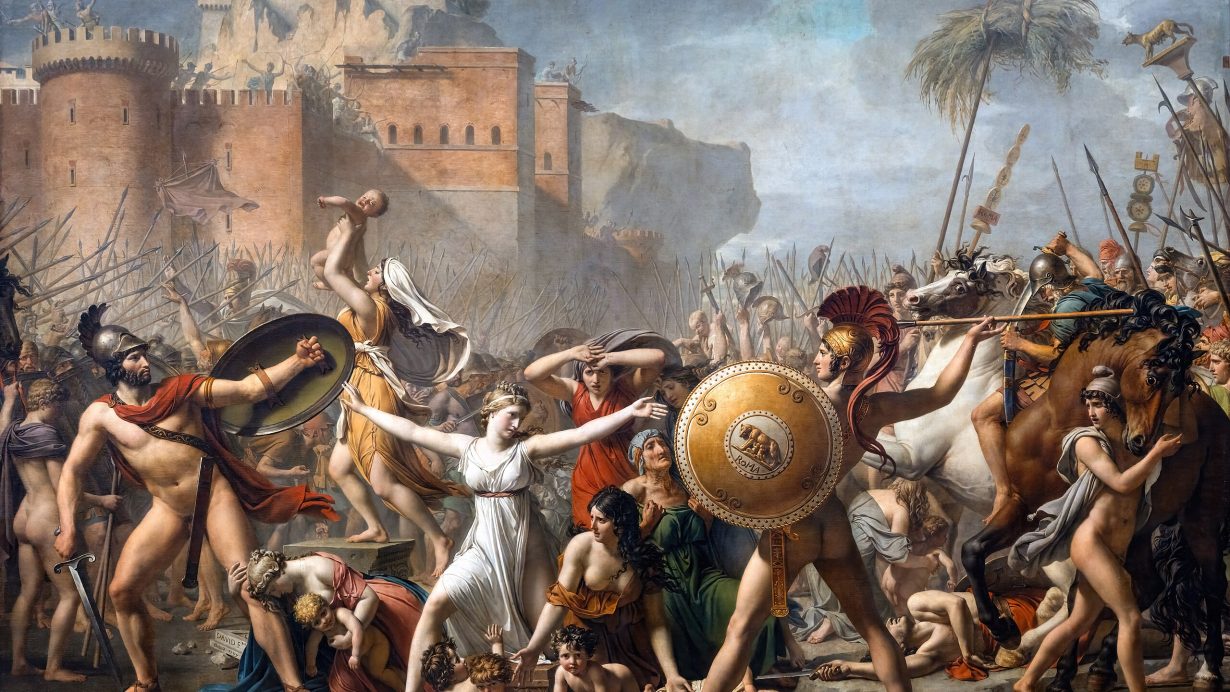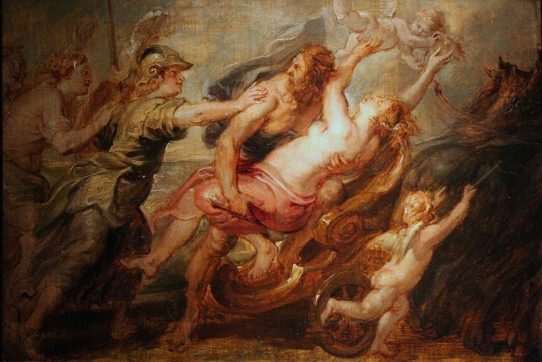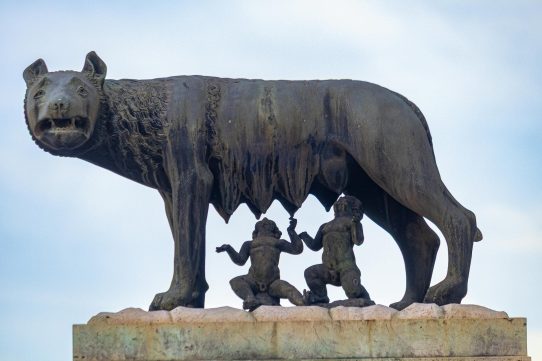Overview
The story of the Sabine Women stands at the heart of Rome’s earliest legends — a tale not merely of abduction, but of reconciliation, courage, and the founding of civic unity. Beneath its ancient violence lies a deeper moral: that peace and law often rise from conflict, and that Rome’s greatness was built as much upon the strength of women as upon the valor of men. This myth, preserved by Livy and later retold by Roman historians and poets, traces how compassion ended a war and gave birth to a people.
The Founding of Rome
When Romulus founded the city of Rome, he opened its gates to fugitives, exiles, and wanderers seeking a new beginning. The population swelled with men eager for adventure but lacking wives to continue their line. Romulus understood that no city could endure without families and alliances. He sent envoys to the neighboring tribes — the Latins, the Etruscans, and the Sabines — asking for marriage pacts to strengthen his fledgling nation. But pride and suspicion led to refusal. The Sabines in particular mocked Rome’s request, unwilling to mix their noble blood with what they saw as a city of vagabonds.
The Festival and the Seizure
Romulus concealed his anger and devised a plan as bold as it was controversial. He announced a grand festival in honor of Neptune, inviting the Sabines and their families to attend. They came in festive procession, bringing wives and daughters, unaware of what fate awaited them. As the games began, Romulus gave a signal. The Roman men sprang from their seats, seizing the Sabine women amid the confusion. Their cries filled the air, and the festival turned to chaos. The men carried their captives to their homes, but Romulus forbade any harm or dishonor. He spoke instead of marriage, of shared destiny, and of a new nation forged by union rather than conquest.
The Plea for Peace
While the Sabine men prepared for war, the women gradually came to see their captors in a different light. The Romans treated them with respect and sought to win their affection. When the Sabine fathers and brothers finally marched on Rome, led by their king Titus Tatius, the women found themselves torn between two loyalties — to the families of their birth and to the husbands who now called them wives. As the armies clashed within the city, the women, with hair unbound and infants in their arms, ran between the lines of battle.
Livy describes the moment when they threw themselves between the spears, crying out that the men on both sides were now kin. “If you care for us,” they pleaded, “cease this slaughter. We would rather die together than see our husbands and fathers kill each other.” Their courage stilled the combat. Silence fell, and the swords were lowered. The women had achieved what no decree could command — peace born from compassion.
The Union of Nations
Moved by their bravery, Romulus and Titus Tatius agreed to a truce. They merged their peoples under a single rule, forming one state. The Sabines entered the Roman hills, and for a time, the two kings governed jointly. The city became known as “Rome of the Sabines,” and its citizens were henceforth united by law and marriage. The women, once symbols of division, became revered as the mothers of a nation.
Meaning and Legacy
The myth of the Sabine Women endures as a story of reconciliation and moral courage. It transforms an act of violence into a lesson on mediation, portraying women not as victims but as agents of peace. Roman writers often cited the tale as a parable of civic virtue — that strength must yield to compassion and that harmony requires both justice and forgiveness. In the moral imagination of Rome, the Sabine Women embodied the power of moral persuasion over brute force.
Artists from the Renaissance to the modern age found in this myth a symbol of unity after division. Paintings by Poussin and David depict not the abduction but the moment of peace — the women standing between armies, the embodiment of Rome’s ideal balance between passion and law. Through them, the Romans remembered that their civilization was born not only from conquest, but from the courage to end it.
Based on classical sources in the public domain, including Livy’s Ab Urbe Condita and translations available via Project Gutenberg and Wikisource.








